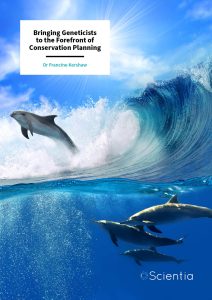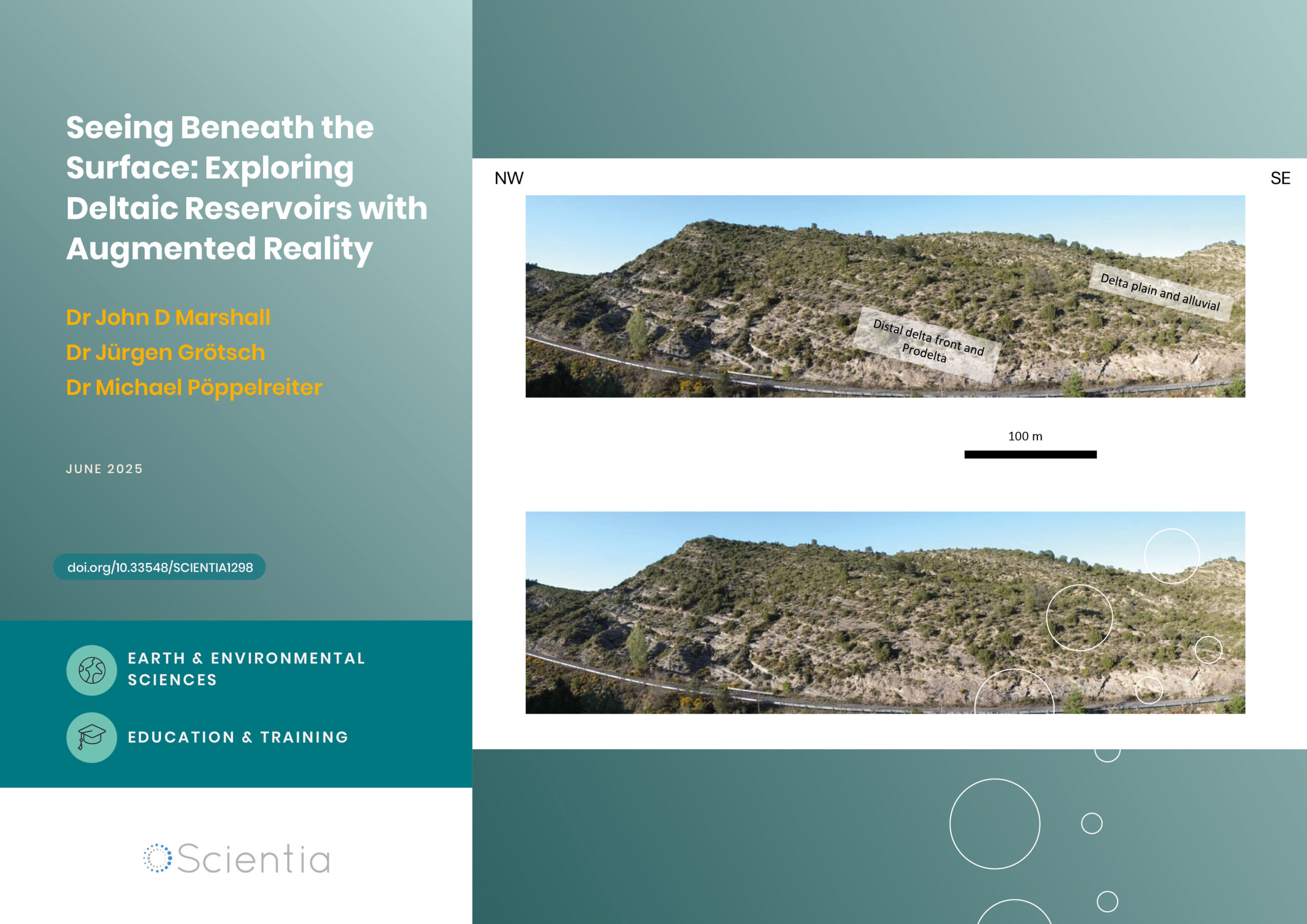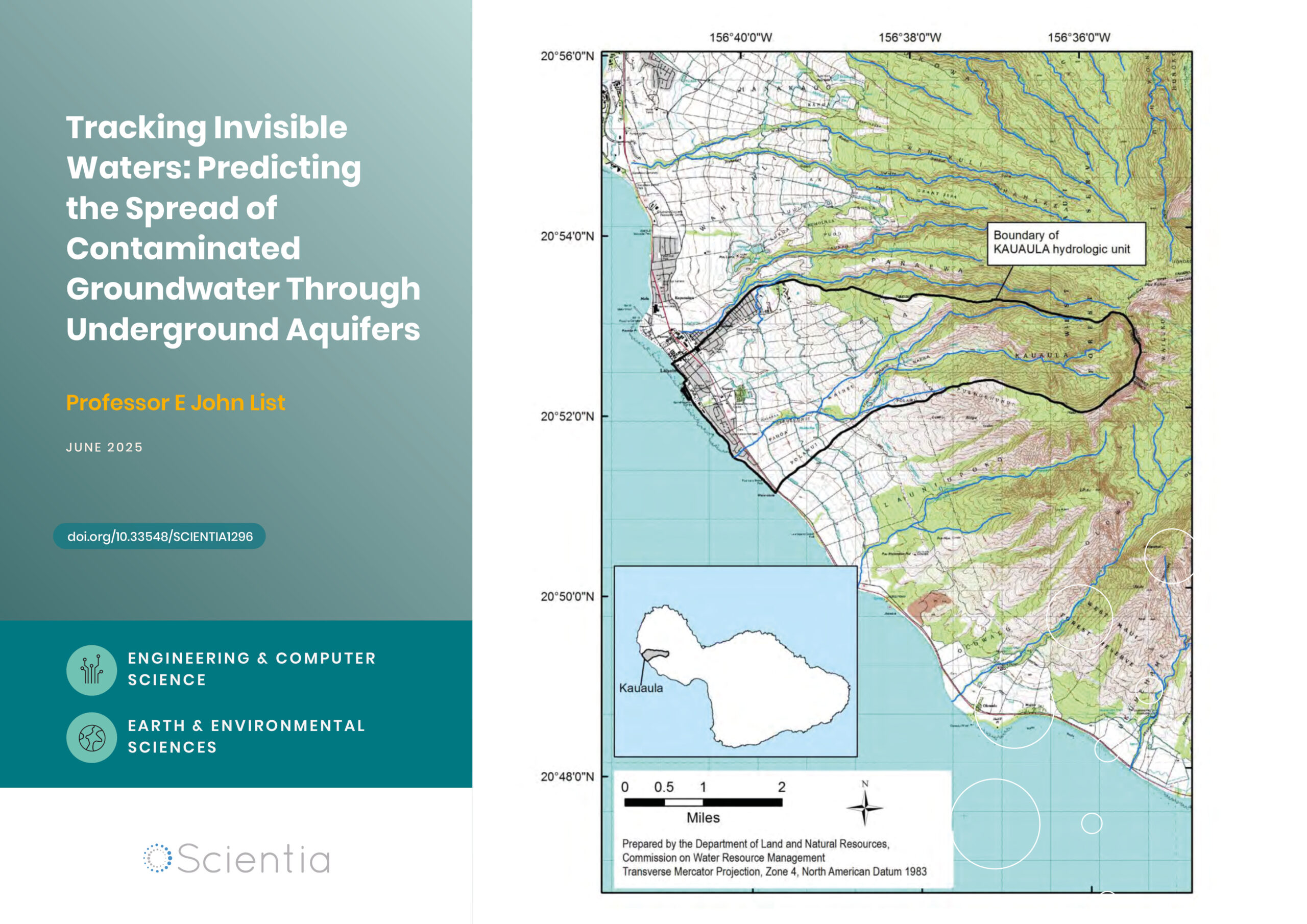Dr Francine Kershaw | Bringing Geneticists to the Forefront of Conservation Planning
Our planet is in peril. Threats such as climate change, habitat destruction, and pollution are contributing to the loss of species at alarming rates. Protecting biodiversity and enhancing ecosystem resilience relies on protecting evolutionary processes at the scale of individuals, species, populations, and ecosystems. Genetic data is a vital component for achieving this, and yet, a significant gap between conservation geneticists and other scientists, conservation practitioners, and policy-makers hinders knowledge-sharing. Dr Francine Kershaw from the Natural Resources Defense Council, USA, has been helping to spearhead a highly collaborative effort to bridge the gap and enhance conservation efforts.
Genetic Diversity Needs Protection
Conserving genetic diversity is essential to protect biodiversity and promote resilience to environmental disturbances, such as fires, droughts, floods, habitat loss, and pollution, as well as long-term climate change. Evolutionary processes that rely on genetic diversity underpin the long-term survival of species. In general, the more diverse the gene pool of a species, the greater the chance it has of adapting to changing environmental conditions.
Genetic data is thus a key component of conservation planning. The importance of accounting for genetic diversity is reflected in a range of policy processes. For example, reporting on the conservation of genetic resources is required by the United Nations Convention on Biological Diversity, the European Union Biodiversity Strategy, and other similar organisations. Despite this, conservation geneticists are repeatedly overlooked in conservation planning and policy making.
Through her research in the field of conservation genetics and marine spatial planning, Dr Francine Kershaw from the Natural Resources Defense Council (NRDC), a non-profit organisation based in the USA, highlights how genetic information is generally dispersed, inaccessible, or misunderstood. She says, ‘Despite scientific advances in the application of genetics in marine protection and management, systematic integration of genetic information has generally been lacking, primarily due to a knowledge and communication disconnect between geneticists and the marine policy and management community.’
Fortunately, Dr Kershaw knows how to solve this problem. Since 2011, she has been helping to spearhead a highly collaborative effort to bridge the gap between conservation geneticists and other scientists, conservationists, and policy-makers.
Genetics visualisation tools Dr Kershaw developed as part of the Geospatial Genetics project – a collaboration between the NRDC, Wildlife Conservation Society, University of California Santa Barbara, and the International Union for Conservation of Nature (IUCN) Marine Mammal Protected Areas Task Force – can be used to visualise genetics information alongside other types of planning information, such as satellite imagery and habitat maps. These tools help to make genetic information more accessible and intuitive, and help facilitate greater and more effective dialogue between scientists and practitioners.
Dr Kershaw is also part of the core leadership team of the Coalition for Conservation Genetics, a global network of conservation genetics experts aiming to integrate research, interpretation, policy, and management to open a pathway from science to policy-making.
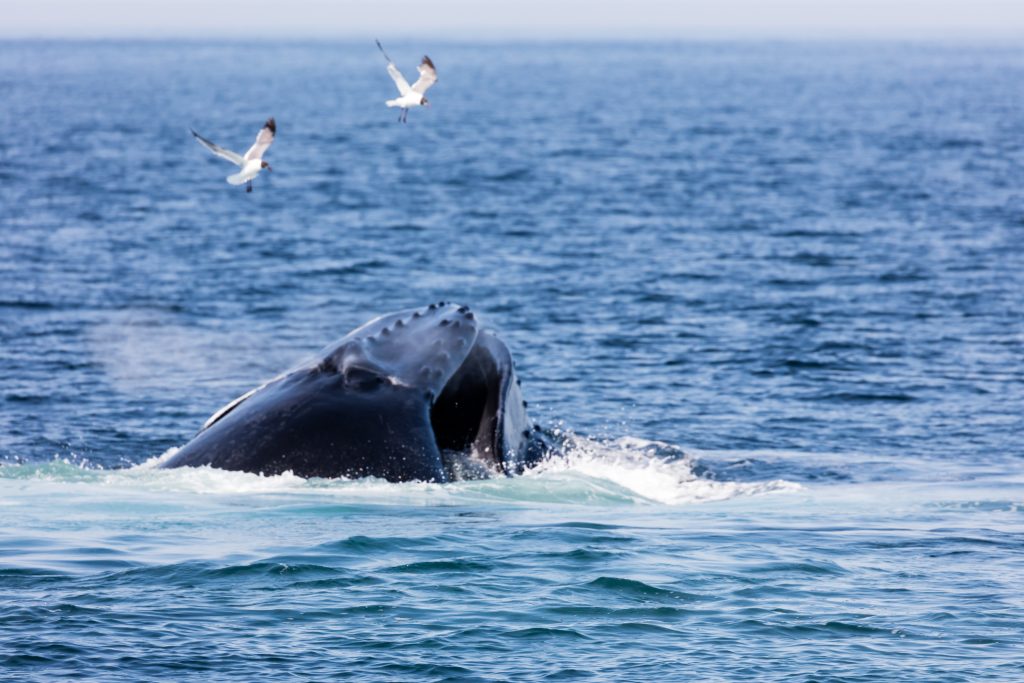
Geospatial Genetics Project: SeaSketch
Protecting the marine environment requires areas of high importance to a specific conservation objective to be identified, such as the protection of a priority species or habitat. This information can then be incorporated into conservation area planning to meet ecological objectives, or into broader marine spatial planning – which also considers economic and social objectives for marine areas.
Identifying priority conservation areas and the ecological component relies on indicators such as habitat type, species richness, and species behaviour, such as feeding locations or migratory patterns. Genetic approaches provide both complementary and unique information to enhance these spatial data. For example, different genes within and across populations can provide insights into the evolutionary history of a species, including their adaptation to local habitats and potential resilience to future environmental changes. Genetic tools are a primary method for defining population boundaries and developing estimates of population abundance and genetic diversity.
In developing the Geospatial Genetics methodology, Dr Kershaw and her team initially focused on marine mammals, though the tools they have created are applicable to many different marine species. Their collaborative effort led to the development of a series of interactive, expert-reviewed case studies, such as on humpback whales and spinner dolphins, which are hosted and available on SeaSketch, a marine mapping and planning tool that has a multitude of useful features.
On SeaSketch, geneticists can view and contribute spatial data, converse on the in-built discussion forums, and gather feedback from the community, for example, about proposed marine conservation areas ‘sketched out’ on the map. SeaSketch supports iterative planning discussions both in-person and remotely – helping to remove barriers to international collaboration.
The project and SeaSketch have been instrumental in embedding genetics into the IUCN Marine Mammal Protected Area Task Force’s global initiative to standardise the process to identify Important Marine Mammal Areas (IMMAs) across the world’s oceans, seas, and relevant inland waters. The guidance on how to identify IMMAs released by the Task Force includes a chapter on genetics, helping to mainstream genetics into conversations about conservation policy.
Work to develop best practices for incorporating genetic data into marine conservation and marine spatial is still ongoing. Dr Kershaw says, ‘Understanding the different types of research questions that can be addressed with different types of genetic markers is critical to ensure that the appropriate genetic tool is employed to meet the conservation objective of that particular process.’
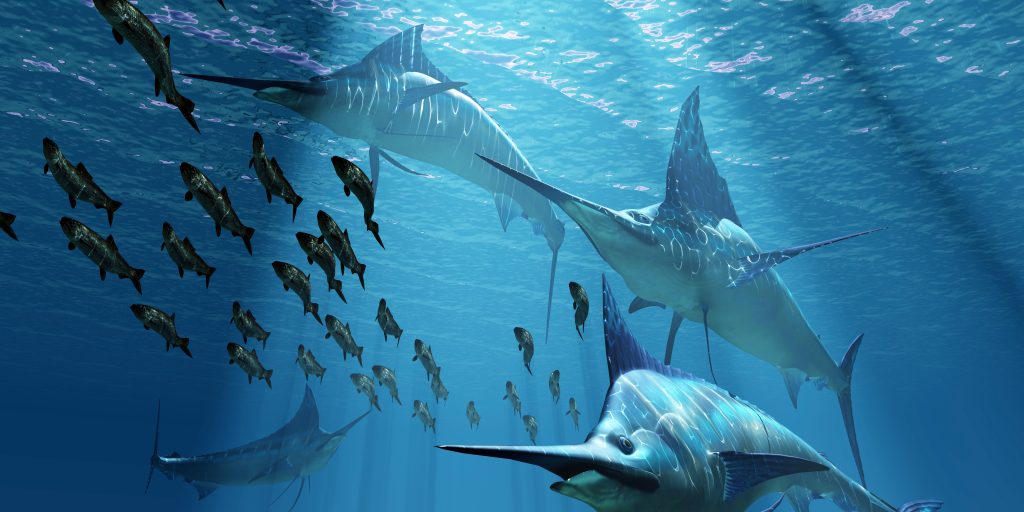
Linking Molecular Ecology and Spatial Conservation Planning
In some of her recent work, Dr Kershaw lent her expertise to the development of a novel, integrated framework for incorporating genetic data into conservation planning. This work bridges the fields of ‘molecular ecology’, which is rooted in understanding how genetic variation drives evolutionary processes in natural populations over time, and ‘systematic conservation planning’, which emerged to provide a structured process for identifying cost-effective priority areas for conservation. The framework is applicable across habitats and landscapes, and helps ensure that conservation efforts protect biodiversity at every scale – from individuals through to whole ecosystems.
The framework presents two themes to integrate molecular ecology and systematic conservation planning. First, Dr Kershaw and her collaborators bridge the concepts, themes and data covered by both fields to build an understanding of the objectives needed to inform conservation decisions. Second, the framework provides a practical step-by-step guide for defining and using conservation objectives, collecting and using molecular data, and integrating molecular information into systematic conservation planning tools. Dr Kershaw and her co-authors provide clear connections between conservation and molecular principles, and the data or metrics that are used to measure and describe them.
The molecular ecology parameters incorporated help describe the target species’ resilience or vulnerability to environmental change based on their levels of genetic diversity, both currently and historically. Spatial conservation planning involves dividing the relevant planning region into discrete planning units, calculating a value for the conservation feature in each one, and identifying which sets of planning units will meet the conservation objectives.
The framework helps conservationists ensure that the planning units contain populations that are representative of the genetic diversity within the species, are adequate to protect the long-term survival of species and habitats, and ensure sufficient connectivity between habitats and populations across the landscape. To ensure the spatial planning units selected for conservation efforts are feasible, the framework also includes consideration of economic and opportunity costs, and resources required by human populations, such as sufficient land reserved for farming or fishing.
To demonstrate, Dr Kershaw and the research team applied their framework to three frog species (Pelobates cultripes, Hyla molleri, and Rana iberica) that live in the Iberian Peninsula. The aim was to identify planning areas for conservation that maximised the conservation outcomes for the frogs while limiting conflicts with existing land use and accounting for existing protected areas. Existing molecular data were gathered for frogs across the ranges of the species, and advanced molecular and geographical statistical modelling were used to produce spatial maps of potential areas of conservation. Finally, planning areas were prioritised and selected using advanced computer program algorithms.
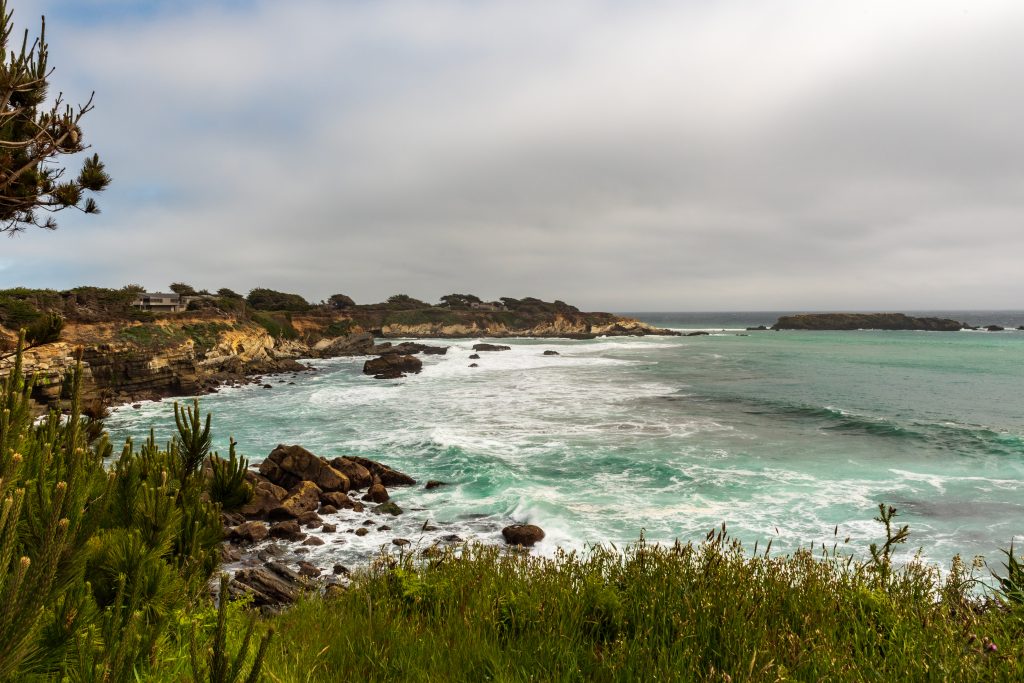
The Coalition for Conservation Genetics
Despite significant work undertaken by individual working groups across the globe, conservation geneticists agreed that these efforts were falling short of the desired level of impact on the policy landscape. Individual scientists and scientific groups often struggle to make any meaningful impact on policy, both nationally and internationally. Therefore, a coordinated, international effort to integrate genetic information into conservation policy and practice is vital to achieving global conservation objectives.
Dr Kershaw and other conservation genetics experts affiliated with four key organisations – the IUCN Conservation Genetics Specialist Group, the Society for Conservation Biology’s Conservation Genetics Working Group, the Genomic Biodiversity Knowledge for Resilient Ecosystems, and the GEO BON Genetic Composition Working Group – created the Coalition for Conservation Genetics (CCG). Members of the coalition work together to bridge the gap between conservation geneticists, and conservation practitioners and policy-makers, providing clear and effective information that demonstrates the value of incorporating genetics into conservation planning. The CCG also aims to increase the global capacity of the conservation genetics community by offering opportunities and support for currently underrepresented groups to maximize inclusivity.
Combining their complementary expertise has allowed the CCG to leverage efforts across the focal areas of the four parent groups simultaneously: implementation, management, research, and policy. Additionally, the coalition allows the organisations to speak with one common voice, increasing impact and reach. Illustrating this, the recommendations and education materials produced by the group have been translated into numerous languages and distributed globally, increasing impact and reach.
The CCG’s achievements so far demonstrate that combining different initiatives under a joint banner can help scientists streamline and coordinate their efforts to have an impact much greater than the sum of their parts. By outlining their lessons learned from the process of establishing the CCG, Dr Kershaw and her colleagues also aim to provide a model for other scientific groups to unite towards a common goal by creating a coalition.
SHARE
DOWNLOAD E-BOOK
REFERENCE
https://doi.org/10.33548/SCIENTIA963
MEET THE RESEARCHER

Dr Francine Kershaw
Natural Resources Defense Council
New York, NY
USA
Dr Francine Kershaw has focused her research on the evolution and habitat use of migratory marine species since she began her postgraduate studies at the University of Oxford, UK. She achieved her PhD investigating the population genetics of migratory whale species from Columbia University, USA, before continuing her research as a Marine Mammal Science Fellow at the Natural Resources Defense Council, an environmental non-profit. Dr Kershaw additionally held positions at the United Nations Environment Programme’s World Conservation Monitoring Centre. She currently holds the position of Senior Scientist at the Natural Resources Defense Council, where she serves as scientific advisor on the development of measures to mitigate the impact of human activities on marine mammals. Dr Kershaw has authored numerous journal articles published in prestigious scientific journals. Additionally, she is a founding member of the Coalition for Conservation Genetics and a member of several other professional organisations.
CONTACT
W: http://www.nrdc.org/experts/francine-kershaw
W: http://www.francinekershaw.site/
KEY COLLABORATORS
Genomic Biodiversity Knowledge for Resilient Ecosystems (G-BiKE)
GEO BON Genetics Composition Working Group
IUCN Conservation Genetics Specialist Group
IUCN Marine Mammal Protected Areas Task Force
Society of Conservation Biology (SCB) Conservation Genetic Working Group
FURTHER READING
ES Nielsen, JO Hanson, SB Carvalho, et al., Molecular ecology meets systematic conservation planning, Trends in Ecology & Evolution, 2022, 38(2), 143–155. DOI: https://doi.org/10.1016/j.tree.2022.09.006
F Kershaw, MW Bruford, WC Funk, et al., The Coalition for Conservation Genetics: Working across organizations to build capacity and achieve change in policy and practice, Conservation Science and Practice, 2022, 4(4), e12635. DOI: https://doi.org/10.1111/csp2.12635
F Kershaw, W McClintock, KR Andrews, et al., Geospatial genetics: Integrating genetics into marine protection and spatial planning, Aquatic Conservation: Marine and Freshwater Ecosystems, 2021, 31(9), 2440–2458. DOI: https://doi.org/10.1002/aqc.3622
REPUBLISH OUR ARTICLES
We encourage all formats of sharing and republishing of our articles. Whether you want to host on your website, publication or blog, we welcome this. Find out more
Creative Commons Licence (CC BY 4.0)
This work is licensed under a Creative Commons Attribution 4.0 International License. 
What does this mean?
Share: You can copy and redistribute the material in any medium or format
Adapt: You can change, and build upon the material for any purpose, even commercially.
Credit: You must give appropriate credit, provide a link to the license, and indicate if changes were made.
SUBSCRIBE NOW
Follow Us
MORE ARTICLES YOU MAY LIKE
Dr Shigetaka Hayano | The Rubber Revolution: Cracking the Code for Tire Recycling!
Traditionally, rubber waste was nearly impossible to recycle due to crosslinked sulphur bonds. But a team of researchers led by Dr Shigetaka Hayano from Zeon Corporation, in Japan, have achieved a groundbreaking feat in rubber recycling. Using mild conditions for the reaction, scientists have overcome the unfavourable cross-linked structure and have achieved recovery of rubber’s original monomers. This process restores cyclopentene monomers with 90% efficiency, allowing old tires and industrial rubber waste to be chemically recycled into high quality materials. If scaled up, this innovation could revolutionise waste management, reduce environmental pollution, and enable a circular economy for rubber production.
Seeing Beneath the Surface: Exploring Deltaic Reservoirs with Augmented Reality
In the Aínsa Basin of the Spanish Pyrenees, the Mondot-1 well was drilled, cored, and fully logged to capture a detailed record of a long-buried ancient river delta system. Dr. John D. Marshall, Dr. Jürgen Grötsch, and Dr. Michael C. Pöppelreiter with co-workers at Shell International used this core to trace how sediments once flowed across the landscape, and were deposited under shifting tectonic conditions. The team employed augmented reality and interactive virtual displays; these innovative tools offer new ways to explore subsurface depositional systems, and are particularly useful in locations where physical access to the core is difficult, or no longer possible.
Professor E John List | Tracking Invisible Waters: Predicting the Spread of Contaminated Groundwater Through Underground Aquifers
When we think about water pollution, we often picture oil spills on the ocean surface or chemicals flowing down rivers. But some of the most significant environmental challenges occur completely out of sight, deep underground, where contaminated water moves through layers of rock and soil. Understanding how these invisible pollutants travel has profound implications for protecting our drinking water supplies and coastal ecosystems. Groundwater engineer Dr E. John List has developed an approach that challenges fundamental assumptions about how contamination spreads underground.
Dr Richard Marchant | Restoring the Flow: Stream Life Slowly Returns After Rabbit Eradication on Macquarie Island
The remote streams of subantarctic Macquarie Island are home to low diversity freshwater invertebrate communities with an unusual taxonomic composition. However, over a century of grazing by introduced rabbits dramatically degraded surrounding vegetation, increasing erosion and disturbing stream ecosystems. Following rabbit eradication in 2016, Dr Richard Marchant of Museums Victoria and colleagues from the University of Canberra and the Australian Antarctic Division investigated whether the island’s streams were recovering ecologically. Their study reveals a slow but measurable resurgence of invertebrate taxa, particularly in areas with moderate prior damage and vegetation regrowth, though full recovery remains uncertain.

